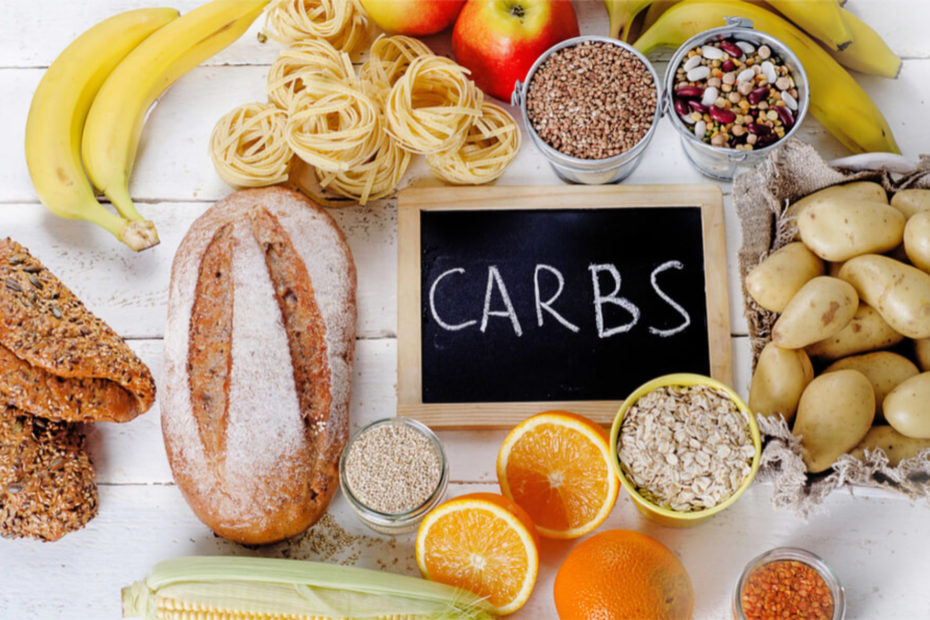Carbohydrates include sugars, starch, and fibre. They are not essential because we can produce glucose in our livers, but many people find dietary carbs beneficial. Carbs help us form important components of certain coenzymes like ATP, FAD, and NAD, form the backbone of RNA, and a component of DNA. Sugars and compounds made from them in the body also play key roles in the immune system, fertilization, blood clotting, and development. Starches are broken down into glucose in the body, which fills glycogen levels in muscles. Excess carbs (besides fiber), are likely turned into fat in the body. Intense exercise depletes glycogen rapidly, which is why many athletes consume a lot of carbs.
Quick Facts
-Includes sugars, starch, and fibre (plant cellulose)
-Made of carbon, hydrogen, and oxygen
-Allows us to store energy as the carbohydrate glycogen in our muscles and liver, they form important components of certain coenzymes like ATP, FAD, and NAD (coenzymes allow enzymes to work), they form the backbone of RNA, and they are a component of DNA. Sugars and compounds made from them in the body also play key roles in the immune system, fertilization, blood clotting, and development.
[13]
-Net carbs are sometimes used to measure how much carbs you actually can absorb. Net carbs = total carbs – fiber. Fiber can’t be broken down, so it doesn’t count towards net carbs
-Carbohydrates are broken down into glucose, and released into the bloodstream. When this happens, the pancreas stops secreting glucagon which allows body fat to be burned for energy, and starts secreting insulin to get glucose into the cells and out of the blood stream. The amount that doesn’t get absorbed into cells gets stored as glycogen, which has roughly a capacity of 400g for the average man. When this capacity is reached, the rest of the glucose is sent to the liver most likely to be transformed into triglycerides (fat) [111].
-Note that with athletic training, your body can learn store much more glycogen [114]
-Glycogen is used during intense physical activity, including weight lifting, plyometric, HIIT, and intense cardio. Typically, milder cardio relies on burning fat for energy.
RDI
275 g [128]
-Highly dependent on the individual’s age, sex, and activity levels. Typical recommendations are to get 45 – 60% [110] of calories from carbohydrates, though this may not be the healthiest range.
It appears that humans can survive with very low carbohydrate intakes, but that some amount is beneficial for most people. There is a large debate about what % of one’s calories should come from carbohydrates.
For ketosis, about 20 – 25 grams of net carbs (carbs – fiber) per day is the limit, however this depends on the person [108][109].
Deficiency
Transitioning into ketosis often causes a keto flu, having the following symptoms: fatigue, dizziness, nausea, headache, brain fog, fruity or acetone smelling breath, increased energy (once fully transitioned), decreased sugar cravings, and the ability to remain energetic longer between meals [109]. Some argue that some amount of carbohydrate in the diet is beneficial and that long term ketosis is less healthy for the body.
Toxicity
-Insulin resistance can develop if excessive carbohydrates are consumed regularly. Insulin resistance increases one’s risk for pre-diabetes, type 2 diabetes, as well as many other diseases including heart attacks and cancer [112]
-Excessive body fat develops from consuming too many carbohydrates since excess glucose is transformed into fat [111]
Sources
Grains: Breads, pastas, cereals. Any foods made from wheat, corn, rice, oatmeal, quinoa, spelt, millet, kamut etc. breads, pastas
Legumes: Lima beans, garbanzo beans, kidney beans, lentils
Potatoes
White, red and yellow potato, sweet potato
Fruits: Raisins, apricots, bananas, apples [139]

